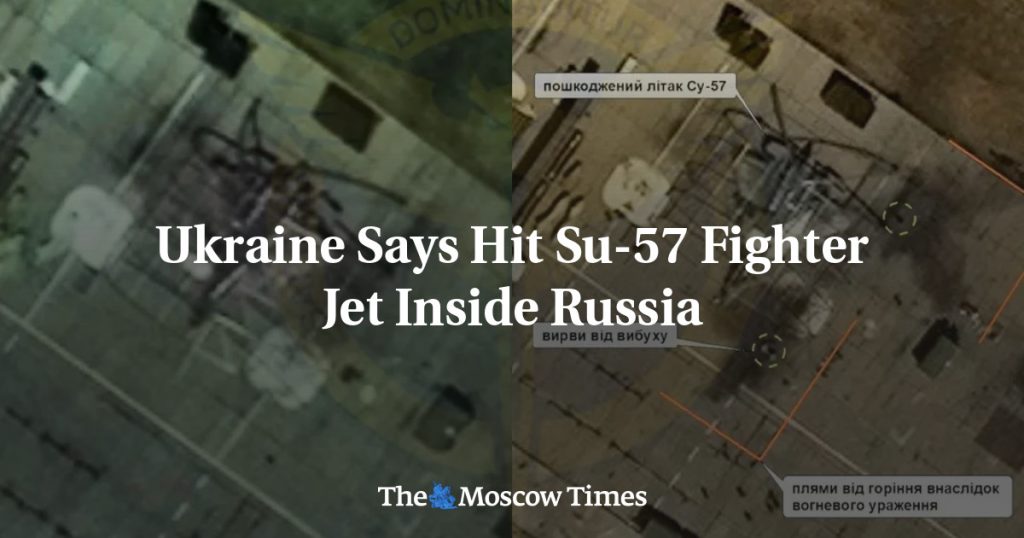Ukraine made history by successfully targeting a Russian Su-57 fighter jet parked at an airfield in southern Russia, marking the first attack on Moscow’s latest generation stealth aircraft. This flagship aircraft was introduced into Russia’s aerospace forces in December 2020 and was meant to replace older Soviet-designed fighter aircraft like the Su-27 and MiG-29. The strike on the Su-57 took place on June 8, 2024, at the Akhtubinsk airfield in Russia’s Astrakhan region, approximately 589 kilometers away from the front line. The GUR military intelligence of Ukraine confirmed the defeat of the Su-57 and presented satellite images showing fire damage and debris around the targeted jet.
The GUR did not elaborate on how the strike on the Su-57 was carried out, nor did it directly claim responsibility for the attack. However, a Ukrainian intelligence source informed AFP that the GUR was behind the operation and employed Ukrainian-made combat drones to execute the strike. It is common for Ukraine to utilize drones to target Russian military and energy facilities, even reaching locations hundreds of kilometers from the front lines. Russian air defenses intercepted and shot down three drones over the Astrakhan region the day before the strike on the Su-57, as reported by Moscow’s Defense Ministry.
The successful attack on the Su-57 showcases Ukraine’s ability to penetrate Russian airspace and target high-value assets like the advanced stealth fighter jet. The Su-57 marked a significant advancement in Russia’s military capabilities, and its loss represents a blow to Moscow’s air force. The GUR’s use of combat drones for such precision strikes highlights Ukraine’s evolving military tactics and technological advancements in its conflict with Russia. By targeting an aircraft like the Su-57 at an airfield far from the front lines, Ukraine demonstrates its ability to strike deep into Russian territory and cause substantial damage.
The attack on the Su-57 underscores the ongoing conflict between Ukraine and Russia, with military actions taking place beyond the traditional front lines. Despite international efforts to broker peace negotiations, both sides continue to engage in hostilities and strategic attacks. The use of drones for targeted strikes adds a new dimension to the conflict, as Ukraine leverages technology to disrupt Russian military operations and infrastructure. The incident also raises questions about Russia’s air defense capabilities and its ability to protect advanced aircraft like the Su-57 from unconventional attacks.
The Su-57 strike represents a strategic victory for Ukraine and a setback for Russia, as Moscow loses one of its prized stealth fighter jets to Ukrainian military intelligence. The successful operation highlights the effectiveness of Ukrainian combat drones in carrying out precision strikes on high-value targets. This development could potentially shift the dynamics of the conflict and compel Russia to reevaluate its defenses against drone attacks. As the conflict between Ukraine and Russia continues, both sides are likely to intensify their efforts to gain the upper hand through innovative tactics and technological advancements in the ongoing battle for control and influence in the region.


